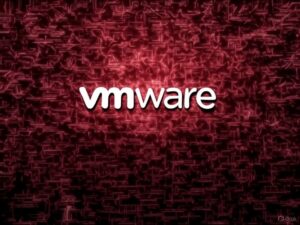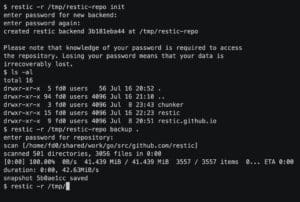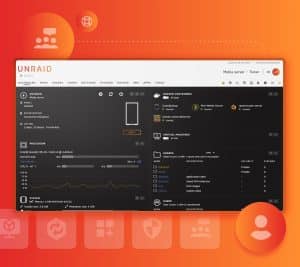At the core of the internet and any modern network are servers — essential components that allow everything from loading websites and processing online payments to hosting multiplayer video games or managing enterprise infrastructures. While many imagine servers as large machines in cold data centers, the reality is that they come in various forms and perform multiple functions, from simple home setups to globally distributed cloud architectures.
This article provides an in-depth explanation of what a server is, the most common types, their technical characteristics, evolution towards virtual and cloud environments, and real-world examples across industries.
What Is a Server?
A server is a computing system (hardware, software, or a combination of both) that delivers services, data, or resources to other devices known as clients, over a network such as the internet or a local area network (LAN). It operates under a client-server model, where the server awaits and responds to client requests.
Examples of services a server can provide:
- Hosting websites and web applications
- Serving multimedia files (audio, video, images)
- Processing digital transactions and payments
- Managing databases, user authentication, and access control
- Running business and productivity applications
Servers can run locally (on-premises) or remotely via cloud platforms, and they are typically designed to run continuously with high availability.
How Does a Server Work?
Servers are built to operate 24/7 and are optimized to handle many simultaneous requests efficiently from multiple clients.
Basic workflow:
- A client (such as a web browser or mobile app) sends a request.
- The server receives, interprets, and executes the required action (e.g., querying a database or loading a file).
- The server sends back a response with the requested resource.
- This interaction typically occurs in milliseconds, hundreds or thousands of times per second, depending on server capacity.
Servers rely on specialized operating systems, including:
- Linux Server (e.g., Ubuntu Server, CentOS, Debian)
- Windows Server
- Enterprise distributions (e.g., Red Hat, SUSE, Oracle Linux)
They also integrate monitoring, automation, and scalability tools to maintain optimal performance.
Types of Servers by Function
Servers can be classified by the type of service they offer. Below are the most relevant:
1. Web Server
Delivers web content via HTTP/HTTPS protocols.
- Used for: websites, blogs, web apps.
- Examples: Apache, Nginx, LiteSpeed, OpenLiteSpeed.
2. File Server
Stores and shares files across networks.
- Used for: corporate networks, NAS, backup systems.
- Examples: Samba, FTP, NFS, OwnCloud.
3. Database Server
Manages structured or unstructured data queries.
- Used for: ecommerce, CRMs, ERPs.
- Examples: MariaDB, MySQL, PostgreSQL, Microsoft SQL Server, MongoDB.
4. Email Server
Sends, receives, and stores email messages.
- Protocols: SMTP, IMAP, POP3.
- Examples: Exim, Postfix, Dovecot, Microsoft Exchange.
5. Application Server
Executes business logic or backend processes.
- Used for: ERP platforms, microservices, internal tools.
- Examples: Tomcat, WildFly, GlassFish, Node.js servers.
6. DNS Server
Resolves domain names into IP addresses.
- Critical for web browsing.
- Examples: BIND, PowerDNS, Unbound.
7. Proxy Server
Intermediary that controls traffic and boosts security.
- Used for: web filtering, load balancing, anonymity.
- Examples: Squid, HAProxy, NGINX as reverse proxy.
8. Virtualization Server
Creates and manages virtual machines (VMs).
- Used for: server consolidation, testing, isolated environments.
- Examples: VMware ESXi, Proxmox VE, KVM, Hyper-V.
9. Streaming Server
Distributes live or on-demand media.
- Used for: video platforms, online radio, webinars.
- Examples: Wowza, Red5, Icecast.
Technical Characteristics of a Modern Server
| Feature | Description |
|---|---|
| High availability | Designed to run continuously, with full component redundancy. |
| Optimized performance | Enhanced CPU, RAM, and I/O buses for heavy concurrent loads. |
| Redundancy | RAID, dual power supplies, multi-network interfaces. |
| Advanced security | Firewalls, MFA, TLS encryption, granular access control. |
| High-speed connectivity | 1G, 10G, 25G+ interfaces, fiber or trunked connections. |
| Remote management | IPMI, iDRAC, SSH, KVM consoles, web dashboards. |
| Efficient cooling | Thermal systems suited for rack, data center, or industrial environments. |
| Scalability | Vertical and horizontal resource expansion capabilities. |
| Virtualization compatibility | Supports hypervisors, containers, and orchestration tools like Kubernetes. |
Implementation Models
Today, servers can be deployed in several ways, each offering specific benefits:
- Bare-metal servers: dedicated physical machines offering maximum performance and control.
- Virtual servers: managed by hypervisors like VMware, KVM, or Hyper-V, ensuring flexibility and isolation.
- Containers: lightweight, fast-deploying environments using Docker or Podman.
- Cloud servers: on-demand instances from providers like AWS, Azure, Google Cloud, Stackscale.
- Edge computing servers: distributed systems close to end users for minimal latency in IoT and real-time services.
Real-World Use Cases
- Ecommerce: coordinated servers (web, DB, cache, CDN) to ensure speed and uptime.
- Education: universities use LMS platforms (e.g., Moodle), storage, email, and video conferencing.
- Finance: banking entities employ HA servers with replication, continuous backup, and compliance standards.
- Streaming & entertainment: media servers with global load balancing and automatic scaling.
- Government: national data centers hosting critical services on secure and redundant servers.
- Healthcare: servers handling EHRs, medical images, and clinical apps with strict privacy regulations.
Conclusion
A server is not just a machine connected to the internet—it’s the backbone of the digital era. From simple websites to platforms with millions of simultaneous users, everything depends on well-configured, secure, and scalable servers.
Understanding the different server types, their features, deployment options, and real-life applications enables professionals, businesses, and entrepreneurs to make informed decisions. Whether you’re hosting a personal project or launching enterprise-grade infrastructure, knowing what a server is forms the foundation for building sustainable, reliable digital solutions in our interconnected world.












